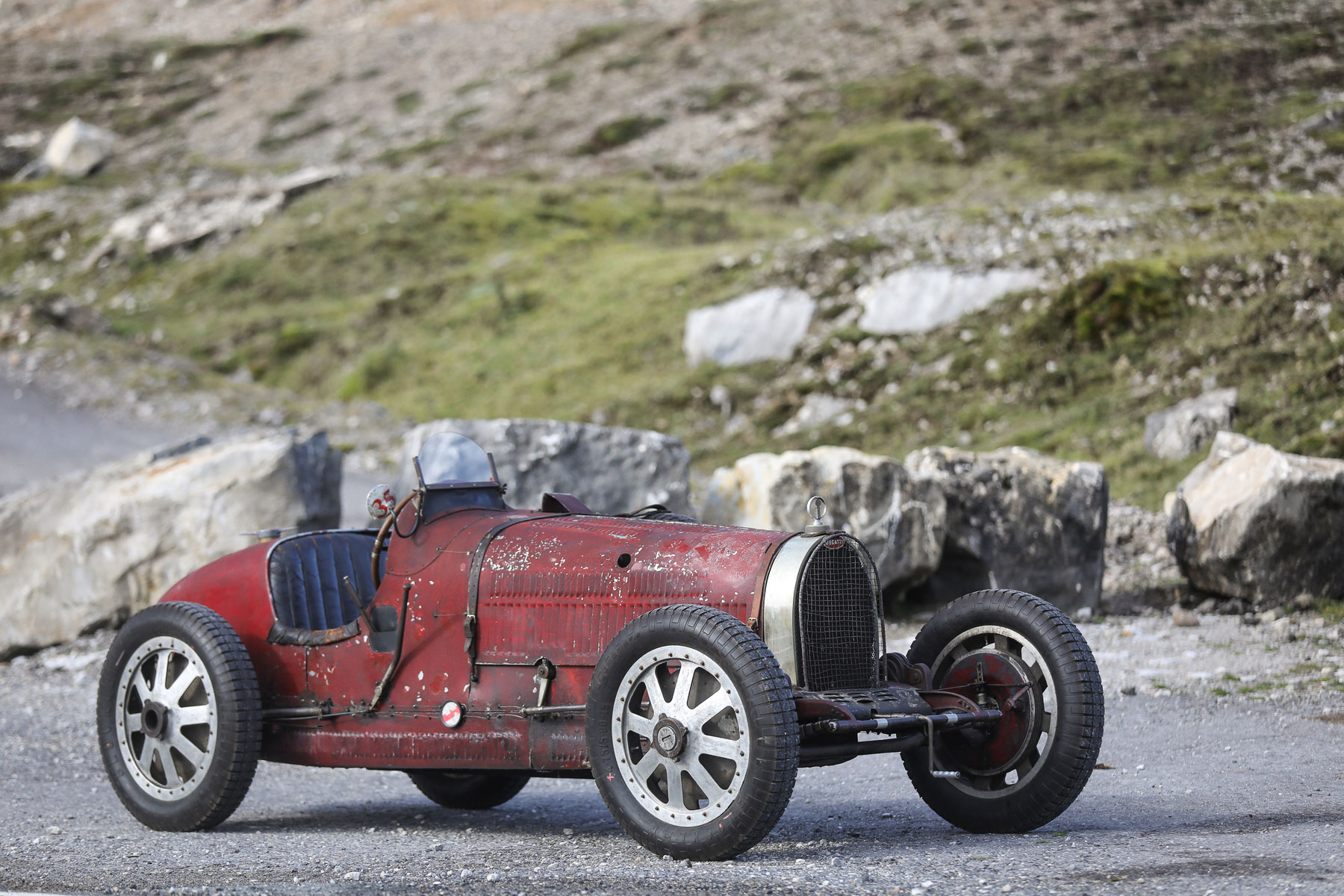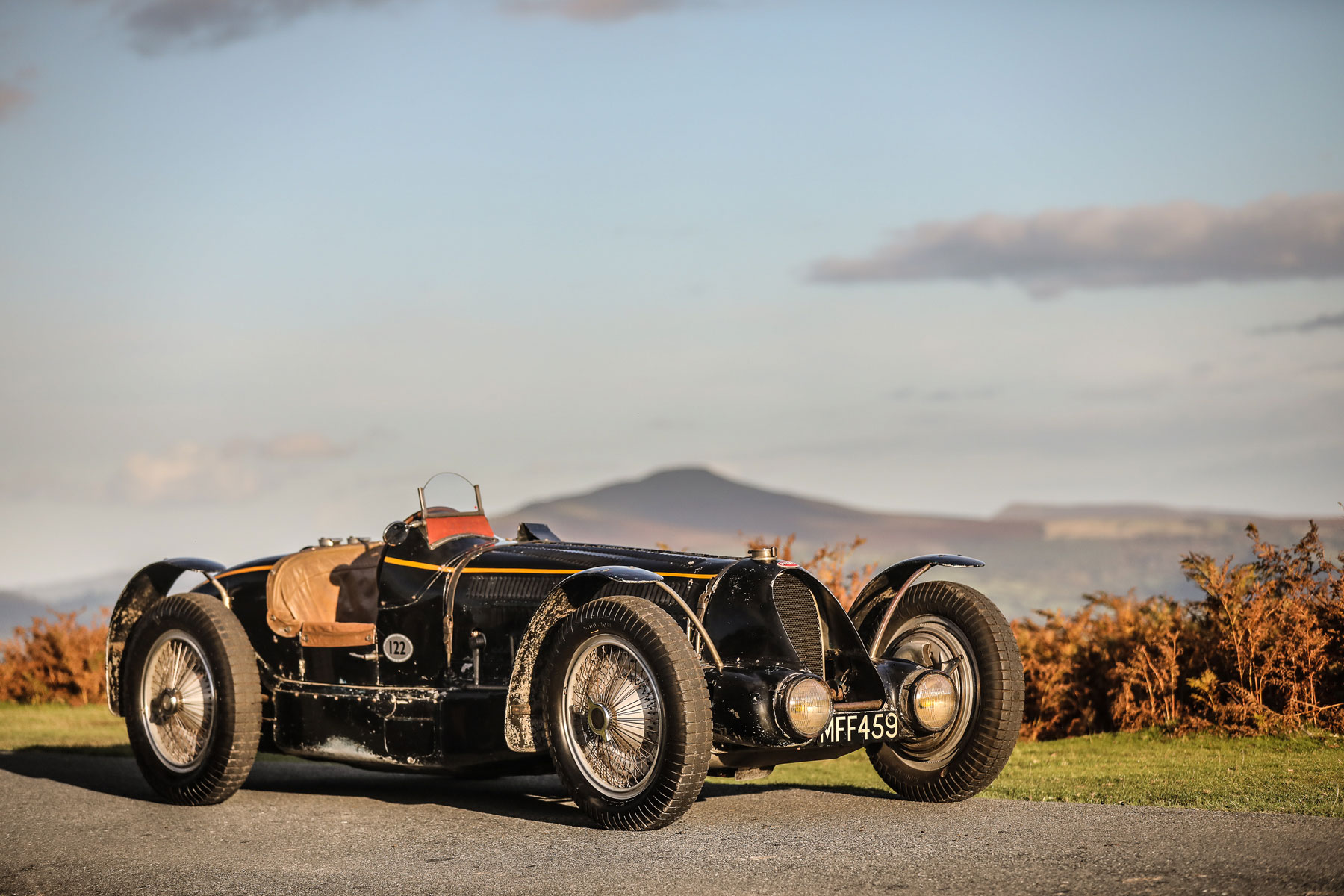6 historic Aston Martins and Bugattis bound for Gooding’s first London sale
Billed as the “Passion of a Lifetime” sale, auction house Gooding & Company’s first auction outside the U.S. will feature cars from a single private collection crossing the block on April 1. Held in the courtyard at the palatial Somerset House in central London, it will be a small 16-car sale with emphasis on quality over quantity. All the cars are spectacular, but the best of them are either Aston Martins or Bugattis.
1961 Aston Martin DB4 GT Zagato

Pre-sale estimate: £7M–£9M ($8.96M–$11.52M)
If you’re familiar with Italian coachbuilder Zagato, words like “distinctive” or “interesting” might come to mind before “gorgeous.” Zagato’s take on the Aston Martin DB4 GT, however, is very much the latter
The DB4 GT was already a lightweight version of the DB4 with a shorter wheelbase, twin-plug ignition and triple Weber carburetors, and it was a potent but only somewhat successful racing car. The Zagato version, penned by Ercole Spada, shed another 100 pounds and the shape is more aerodynamic. It’s also prettier.
Aston planned a run of 25 DB4 GT Zagatos but in the end only 19 were finished. This one has been with the same owner since 1985, is reportedly the only one finished in this shade of “Peony,” and has never been fully restored. It also doesn’t have any racing history, which explains why the pre-sale estimate is a bit lower than other Zagatos sold in recent years. One with some Australian racing history in period sold for $14.3M in New York back in 2015, and one of the famous Essex Racing Stable Zagatos sold at the Goodwood Festival of Speed sale in 2018 for £10,081,500 (about $13.3M at the time).
1928 Bugatti Type 35C

Pre-sale estimate: £3M+ ($3.84M+)
The Type 35 was Bugatti’s most successful racing car, with countless wins to its credit. Its innovative crankshaft for the overhead cam engine, smooth-running alloy wheels with integral brake drum and hollow forged front axle were all technical marvels in the 1920s. The Type 35C, the version fitted with a Roots-type supercharger, is even quicker and was one of the more successful versions of the 35 series.
According to Gooding & Company, this Type 35C was a works entry at the Targa Florio in Sicily, a race won by Type 35s five years in a row from 1925-29. After running the Targa in 1928, the car went into private hands and raced for several more years throughout Europe. Today, it still wears red paint from 1932 but has supposedly been mechanically restored.
1955 Aston Martin DB3S

Pre-sale estimate: £3M–£4M ($3.84M–$5.12M)
Before Aston Martin finally got its elusive Le Mans win in 1959 with a DBR1, it was the DB3S that carried the company’s hopes in top-level sports car racing. Aston built 11 works DB3Ss and sold 20 cars to private teams, including this one. One of three cars ordered by a team called Kangaroo Stable in Australia, it raced in Europe, England and New Zealand over the course of 1955-56, its best result being a second-place finish at the 12 Hours of Hyères in the South of France. It also set an Australian Land Speed Record in its class, clocking 143.19 mph. On a dirt road!
Back on pavement, the DB3S crashed at Bathurst in Australia in 1960 and then went into storage before being restored in the 1970s with a replacement engine. It has been used as a historic racer ever since.
1934 Bugatti Type 59 Sports

Pre-sale estimate: £10M+ ($12.81M+)
The Type 59 debuted in 1933 with a 250-hp 3.3-liter supercharged twin-cam straight-eight, lightened frame and novel piano wire wheels. It was Bugatti’s ultimate Grand Prix racer, but it wasn’t a winner. Even though Bugattis were the cars to beat during the 1920s, the racing landscape was very different in the ‘30s. German and Italian teams, infamously, got state funding for their efforts. The French teams didn’t, so Grand Prix racing in the leadup to World War II was all about the Silver Arrows from Mercedes-Benz and Auto Union, along with Alfa Romeo.
There were exceptions, though. According to Gooding & Company, this spectacular Type 59 was a works car that finished in third at Monaco and won the Belgian Grand Prix at Spa. Then, after Bugatti withdrew from Grand Prix racing, the factory converted the car for sports car racing with a revised chassis and body, which it wears today. It won a lot of races during 1937 in the hands of Jean-Pierre Wimille, and in 1938 sold to King Leopold III of Belgium. It has never been restored.
1935 Aston Martin Ulster

Pre-sale estimate: £1.6M–£2.2M ($2.05M–$2.82M)
After Aston Martin swept the first three places in its class at Northern Ireland’s Ulster Tourist Trophy in 1934, the company named its next high-performance model after the event. Modeled largely after the race cars, the Ulster sold to customers features a 1495-cc single overhead cam four with 85 horsepower and a low, sleek body. Just 21 Ulster customer cars were built.
This is partly because they were so expensive to buy, but Prince Bira and Prince Chula of Siam could certainly afford one, and they bought this car for their famous White Mouse Stable. They raced it just once, but its next owner drove it to a class win at the 24 Hours of Spa in 1936. In 1949, another owner took the car apart and started a restoration, but never finished it. The current owner bought it in 1995 and had it restored in the lovely blue White Mouse Stable livery. The last Ulster sold at auction was in Monterey in 2017, and it brought $2,172,500.
1937 Bugatti Type 57S Atalante

Pre-sale estimate: £7M+ ($8.97M+)
One of the most breathtakingly beautiful cars of the 1930s, the Bugatti Type 57S/SC Atalante is also among the rarest—just 17 were built. The Type 57 was already a fantastic car, but the 57S (S for Surbaissé, French for “lowered”) made the whole thing lighter, lower, and quicker. And the aluminum Atalante body, penned by Jean Bugatti (son of company founder Ettore of pasta-machining fame) is second only to the similar Atlantic coupe in the good looks department.
This one sold new to British MP, naval officer, racing driver and nobleman Francis Curzon, aka Earl Howe. The Earl raced at Le Mans six times (winning in 1931), at the Monaco Grand Prix and tons of other races, often behind the wheel of a Bugatti. After he enjoyed the 57S for a while, it then passed through a few owners, eventually getting a supercharger in the late 1940s, which effectively brought the 57S to “SC” specs (S for Surbaissé, C for Compresseur, French for “supercharger”). In 1955, an eccentric doctor in Newcastle, England bought it for £895. And then it disappeared for half a century.
If this story is starting to sound familiar, that’s because this Atalante is already quite famous. Everyone loves a barn find, so when it resurfaced as one of the all-time great discoveries back in 2009, it made headlines in both the automotive and mainstream press. The doctor, who had no children, suffered from obsessive compulsive disorder in his later years and became something of a hoarder. When he died in 2007, his family faced the daunting task of clearing out the mess. They didn’t know that in this case the “mess” included a multi-million-dollar Bugatti, along with a few other classic cars. Sure beats an uncle who collects baseball cards.
The Atalante went to auction in Paris in barn-find condition in 2009. Some speculated it could be the most expensive car ever sold at auction at the time, but it fell short of expectations, selling for €3,417,500 (about $4.4M at the time). It has since been restored and today retains its original chassis, body, 3.3-liter twin-cam straight-eight engine, and period-installed supercharger.
Like this article? Check out Hagerty Insider, our e-magazine devoted to tracking trends in the collector car market.

